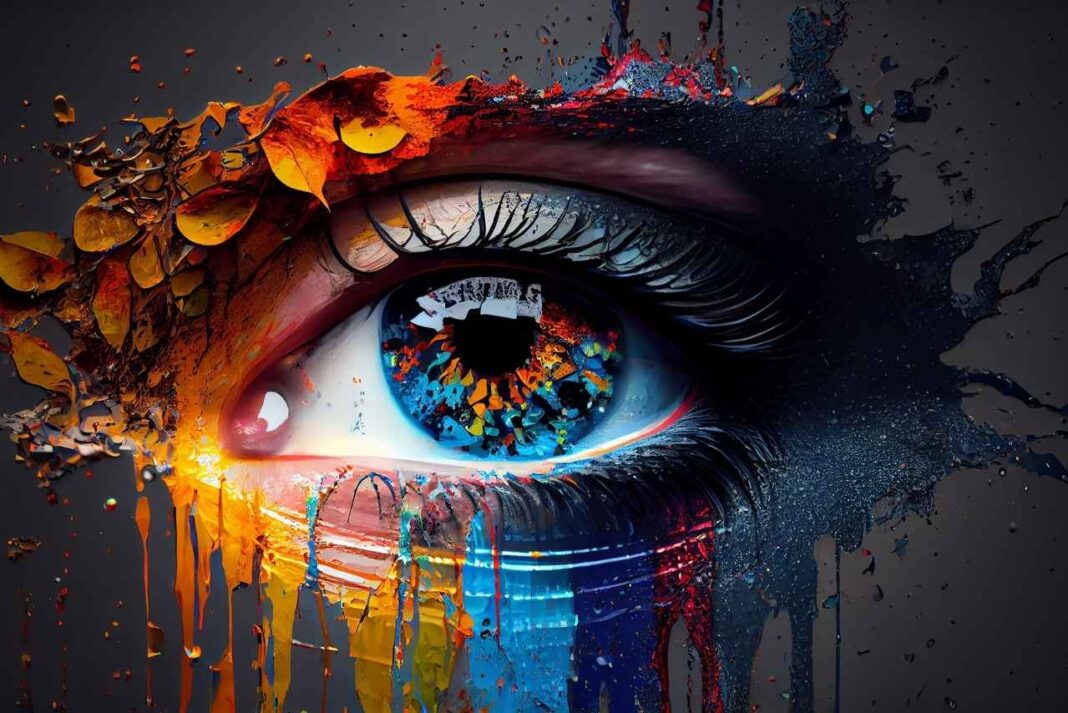Creativity is often seen as a talent exclusive to artists. However, current approaches in psychology suggest that creativity is not just an aesthetic form of expression but also an essential life skill (Rogers, 1961). Generating unexpected solutions during challenging life events, trying new ways, or finding relief through humor are quiet examples of creative thinking in daily life.
American psychologist Carl Rogers defines the creative process not merely as producing something, but as a “way of being.” According to him, a creative person has the capacity for “openness to experience,” “sensitivity to experiences,” and “nonjudgmental exploration” (Rogers, 1961). These qualities are not solely developed in childhood; they can also be acquired over time.
Creativity and the Brain: Neuroscience Insights
Neuroscience research supports this view. The brain’s “default mode network” becomes active during creative thinking processes such as daydreaming and linking the past with the future (Beaty et al., 2015). Interestingly, this network is activated not only when producing great works of art, but also in everyday decision-making processes. This reveals that creativity is not only an artistic trait, but also a cognitive and emotional adaptation skill.
Today, creative thinking plays a critical role in many fields, from education to therapy, crisis management to environmental policies. But to be creative, one doesn’t necessarily have to produce “original” ideas. Sometimes, a creative step is simply a small move outside the ordinary. In an automated world, these small creative differences can nourish mental flexibility and promote well-being.
How Does Creativity Develop?
This ability is not a fixed trait that we are born with. Like muscles, it strengthens with use. Therefore, what is as important as producing is creating a playground — allowing space to try, to break, and rebuild.
What we often lose in adulthood is not the new idea, but the tolerance for making mistakes (Rogers, 1961). Creative processes begin with permission — with giving ourselves the right to ask, “What if I tried this?”; with turning to a blank sheet of paper instead of social media when we’re bored.
Even cooking intuitively rather than following a recipe can enhance mental flexibility. These small moments expand the range of motion of the mind.
Creativity Is Something Like Hope
Creativity is also a carrier of hope. It whispers that the current situation is not the only option, that alternative paths are possible. For this reason, creative thinking is not just a personal skill but also a form of resilience.
Because it carries the courage to say, “It doesn’t have to be this way.” We can be creative even if we are not artists. Creativity is sometimes not about creating something new, but about seeing things from a different perspective. In difficult times, this skill is not only a tool for production, but also a way of directing emotions and restructuring life.
Creativity is not seeing the new, but seeing with new eyes (Rogers, 1961). And often, that is the most graceful way to survive life’s challenges.
Creativity as an Emotional Outlet in Difficult Times
In moments when life feels exhausting, complex, and uncertain, creative thinking offers a space to breathe. It shows us that we are not obliged to settle for what exists; it reminds us that we can rethink, feel differently, and create anew.
What we call creativity does not belong only to those special moments when the muse visits. Sometimes, it emerges from within a sense of being stuck, while seeking a solution to a difficult situation, discovering a new way to tell a story, or expressing emotions.
In that moment, we are not just producing — we are also giving direction to our emotions. Life can sometimes be too messy, too tiring, too uncertain. In such times, most of us search for a way not to feel good, but just to breathe.
And that is where creative thinking steps in. Because it shows us that we don’t have to settle for what is. We can rethink things, do things differently, feel differently.
Creativity Begins with Small Questions
That’s why there’s no real difference between a child who draws and an adult who takes a different route to work. Both add a small twist to life’s straight line. Creativity often begins not with big ideas, but with small, sincere questions like:
-
“What if it were this way?”
-
“Is there another way?”
And Then What Happens?
Then, maybe not much changes. But you open a small space for yourself — a space to think, to try, sometimes just to imagine. And even that reminds you that the world you live in is not one-dimensional.
Creativity may be a way of rejoining life each time. That small sparkle that lifts the day out of the ordinary is sometimes hidden in a word, sometimes in a silence. No one has to be an artist. But everyone can be creative in their own life.
Because sometimes, it’s not an idea but a perspective that saves us (Beaty et al., 2015).



